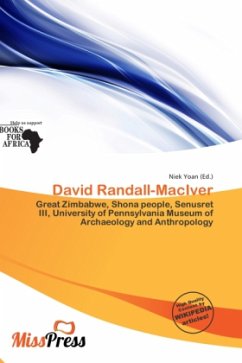Please note that the content of this book primarily consists of articles available from Wikipedia or other free sources online. David Randall-MacIver (31 October 1873 30 April 1945) was a British-born archaeologist, who later became an American citizen. He is most famous for his excavations at Great Zimbabwe which provided the first solid evidence that the site was built by Shona peoples. Randall-MacIver began his career working with Flinders Petrie in Egypt, uncovering the mortuary temple of Senwosret III. He moved to America when he was appointed as Egyptology curator at the Penn Museum, University of Pennsylvania, in 1905. He initiated research into the relationship between Egypt and Nubia, uncovering some of the earliest evidence of ancient Nubian culture, dating back to 3100BCE. Between 1905 and 1906 Randall-MacIver conducted the first detailed study of Great Zimbabwe. The absence of any artefacts of non-African origin led him to conclude that the structure was built by local people. Earlier scholars had speculated that the structure had been built by Arab or Phoenician traders.
Bitte wählen Sie Ihr Anliegen aus.
Rechnungen
Retourenschein anfordern
Bestellstatus
Storno








